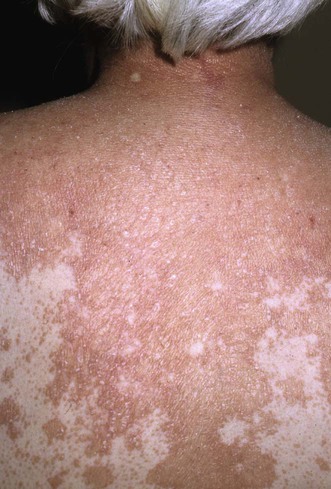Pityriasis rubra pilaris

 Type I: classical adult; rapid onset erythroderma, scale and keratoderma in a craniocaudal pattern
Type I: classical adult; rapid onset erythroderma, scale and keratoderma in a craniocaudal pattern
 Type II: atypical adult pattern
Type II: atypical adult pattern
 Type III: classical juvenile pattern
Type III: classical juvenile pattern
 Type IV: atypical juvenile pattern
Type IV: atypical juvenile pattern
 Type V: well-circumscribed pattern
Type V: well-circumscribed pattern
Stay updated, free articles. Join our Telegram channel

Full access? Get Clinical Tree





